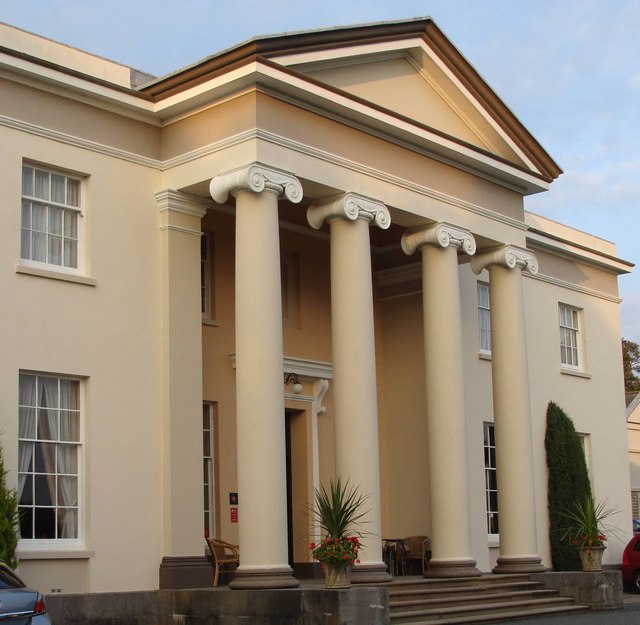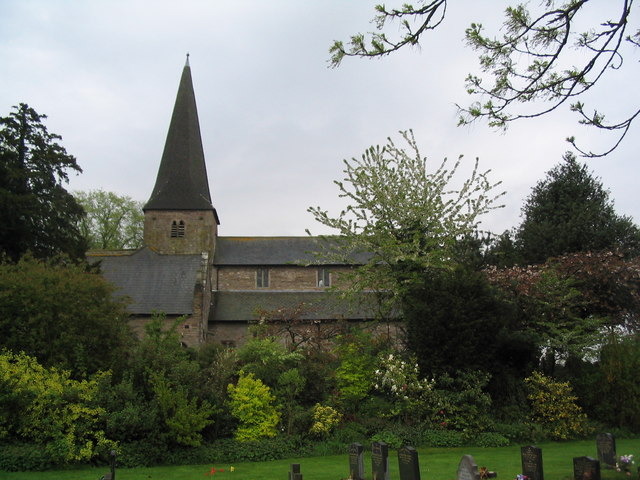|
Tyfei
Tyfei (early 6th century) was a martyr and saint of the medieval Welsh church. Life Tyfei ap Budic was the second son of Budic II of Brittany and his second wife, Anowed or Arianwedd, the daughter of Saint Issel and sister of Saint Teilo. The young Tyfei attempted to intervene in a heated argument between a swineherd and the owner of a field the animals had trespassed. In the course of the confrontation, Tyfei sustained an accidental, 'though lethal wound from a javelin. Tyfei was buried at Penalun (Penally) in Dyfed. Veneration Although his death was apparently accidental, veneration of Tyfei was likely due to his family connections, and he is sometimes called a martyr. At the time, Budic was in exile, a cousin having usurped his throne in Cornouaille. Patricia Healy Wasyliw suggests "...that the legend may mask a political assassination". Churches were dedicated to St. Tyfei at Llandyfeisant, and Lamphey Lamphey ( cy, Llandyfái ) is both a village, a parish and a communit ... [...More Info...] [...Related Items...] OR: [Wikipedia] [Google] [Baidu] |
List Of Welsh Saints
This list of Welsh saints includes Christianity, Christian Christian saint, saints with Wales, Welsh connections, either because they were of Welsh people, Welsh origin and ethnicity or because they travelled to Wales from their own homeland and became noted in their hagiography for their work there. The Welsh mythology, pagan Celts of Celtic Britain, Britain had already been extensively Christianization, Christianized during the Roman Britain, Roman period: although only four victims of Diocletian's Diocletianic Persecution, persecution are now known (Saints Saint Alban, Alban, "Amphibalus", and Julius and Aaron), Britons met the Saxon mythology, pagan Anglo-Saxons, Saxon Saxon invasions of Britain, invaders largely as Christians prior to being driven back to Wales, List of Cornish saints, Cornwall, and List of Breton saints, Brittany. The family of Vortigern, which continued to hold Kingdom of Powys, Powys in the early medieval period, produced numerous saints. Although they lar ... [...More Info...] [...Related Items...] OR: [Wikipedia] [Google] [Baidu] |
Budic II Of Brittany
Budic II ( lat-med, Budicius; cy, Budig or '; ), formerly known as Budick, was a king of Cornouaille in Brittany in the late 5th and early 6th centuries. He was father of Hoel as well as several Celtic saints. Life Budic II was born in Cornouaille to a member of its royal family, possibly Erich of Brittany.Ford, David Nash"Erich"at ''Early British Kingdoms''. 2001. Retrieved 2 December 2014. He was named after his uncle Budic I of Brittany. Budic II succeeded to the throne, , but was expelled by a cousin and fled to the court of King Aircol Lawhir of Dyfed, where another cousin Amon Ddu was employed. There, he wed Anowed or Arianwedd, the sister of Saint Teilo. After the death of his usurping relative, he returned to Cornouaille to claim the Breton throne, later joined by Saint Teilo whom he reputedly persuaded to rid the area of a terrible dragon that had been terrorising the countryside. Teilo was able to subdue the beast and tied it to a rock in the sea. The date of his death ... [...More Info...] [...Related Items...] OR: [Wikipedia] [Google] [Baidu] |
St Tyfi's Church, Llandyfeisant
St Tyfi's Church is the former parish church of Llandyfeisant, near Llandeilo and part of the Dinefwr Park estate in Carmarthenshire, Wales. It was dedicated to the Welsh saint Tyfei, nephew of Saint Teilo. History The history of the site may stretch back to pre-Christian times. The small stone church was first constructed in medieval times. It was first mentioned in the Ecclesiastical Taxation of 1291. By 1324, it was assigned to Talley Abbey. The building may have been replaced or enlarged in the late thirteenth or early fourteenth century. Architecture The church was almost entirely rebuilt in the second half of the nineteenth century. The architect was likely R. Kyrke Pearson from Oswestry, who redesigned Newton House for Lord Dynefwr. The exterior has rubble-stone facings, gable parapets and a stone slate roof. The interior has an open, arched-brace roof with collar-beams and stone corbels, and a window in the south wall from the 13th century from the previous structure. T ... [...More Info...] [...Related Items...] OR: [Wikipedia] [Google] [Baidu] |
Lamphey
Lamphey ( cy, Llandyfái ) is both a village, a parish and a community near the south coast of Pembrokeshire, Wales, approximately east of the historic town of Pembroke, and north of the seaside village of Freshwater East. The 2011 census reported a population of 843. Freshwater East is in the community as is the village of Hodgeston. The village includes the ruins of the fourteenth-century Lamphey Bishop's Palace; a palace of the Bishop of St David's. Church of St Tyfai and St Faith The parish church, dedicated to St Tyfai (or Tyfie) and St Faith, is medieval in origin but was largely rebuilt in 1869–1871 by the architect Ewan Christian. The fine tower is thirteenth or fourteenth century. In the chancel a piscina and two lancet windows date from the thirteenth century, but have been repositioned. The font is Norman. Notable landmarks Several Georgian-era buildings remain, including the guesthouse, ''Lower Lamphey Park'' on the Ridgeway. The village has two hotels/resta ... [...More Info...] [...Related Items...] OR: [Wikipedia] [Google] [Baidu] |
Martyr Of The Faith
In Christianity, a martyr is a person considered to have died because of their testimony for Jesus or faith in Jesus. In years of the early church, stories depict this often occurring through death by sawing, stoning, crucifixion, burning at the stake or other forms of torture and capital punishment. The word ''martyr'' comes from the Koine word μάρτυς, ''mártys'', which means "witness" or "testimony". At first, the term applied to Apostles. Once Christians started to undergo persecution, the term came to be applied to those who suffered hardships for their faith. Finally, it was restricted to those who had been killed for their faith. The early Christian period before Constantine I was the "Age of Martyrs". "Early Christians venerated martyrs as powerful intercessors, and their utterances were treasured as inspired by the Holy Spirit." In western Christian art, martyrs are often shown holding a palm frond as an attribute, representing the victory of spirit over flesh, ... [...More Info...] [...Related Items...] OR: [Wikipedia] [Google] [Baidu] |
Celtic Christianity
Celtic Christianity ( kw, Kristoneth; cy, Cristnogaeth; gd, Crìosdaidheachd; gv, Credjue Creestee/Creestiaght; ga, Críostaíocht/Críostúlacht; br, Kristeniezh; gl, Cristianismo celta) is a form of Christianity that was common, or held to be common, across the Celtic-speaking world during the Early Middle Ages. Some writers have described a distinct Celtic Church uniting the Celtic peoples and distinguishing them from adherents of the Roman Church, while others classify Celtic Christianity as a set of distinctive practices occurring in those areas. Varying scholars reject the former notion, but note that there were certain traditions and practices present in both the Irish and British churches that were not seen in the wider Christian world. Such practices include: a distinctive system for determining the dating of Easter, a style of monastic tonsure, a unique system of penance, and the popularity of going into "exile for Christ". Additionally, there were other pract ... [...More Info...] [...Related Items...] OR: [Wikipedia] [Google] [Baidu] |
Saint Issel
Saint Issel or Issell ( cy, Eussyllt or ''Usyllt'') was a 6th-century Welsh saint from Dyfed principally notable as being the father of Saint Teilo. His name appears in many forms in surviving texts, but seems to have been derived from the Latin name ''Auxilius''. The Book of Llandaff gives his wife as Guenhaf daughter of Liuonui. He was the father of Saint Teilo and the Anauved who married King Budig of Armorica and bore three saints.Baring-Gould, Sabine & al. ''The Lives of the British Saints'', Vol. 4p. 348 f Kessinger Publishing, 2005. Accessed 26 Mar 2013. The oldest genealogies present him as also the father of Saint Cynllo. He was the patron saint of the parish church at Saundersfoot Saundersfoot ( cy, Llanusyllt; Old Welsh: ''Llanussyllt'') is a large village and community (and former electoral ward) in Pembrokeshire, Wales. It is near Tenby, both being holiday destinations. Saundersfoot lies in the Pembrokeshire Coast Nat ... ( owl, Llanussyllt) but probably not t ... [...More Info...] [...Related Items...] OR: [Wikipedia] [Google] [Baidu] |
Saint Teilo
Saint Teilo ( la, Teliarus or '; br, TeliauWainewright, John. in ''The Catholic Encyclopedia'', Vol. XIV. Robert Appleton Co. (New York), 1912. Accessed 20 July 2013. or '; french: Télo or '; – 9 February ), also known by his Cornish name Eliud, was a British Christian monk, bishop, and founder of monasteries and churches. He was from Penalun (Penally) near Tenby in Pembrokeshire, south Wales. Reputed to be a cousin, friend, and disciple of Saint David, he was bishop of Llandaff and founder of the first church at Llandaff Cathedral, where his tomb is. He also founded Llandeilo Fawr, as well as Penally Abbey at his place of birth. Biography St Teilo may have been known as Eliau or Eilliau in Old Welsh. He was born at Penalun (Penally) around the year 500. Teilo's father is usually identified as Ensich ap Hydwn, and he was thought to be the brother of Anowed, and the uncle of Saints Ismael and Euddogwy. Rees, W. J. (trans.) ''Liber Landavensis''pp. 351370 ff We ... [...More Info...] [...Related Items...] OR: [Wikipedia] [Google] [Baidu] |
Cornouaille
Cornouaille (; br, Kernev, Kerne) is a historical region on the west coast of Brittany in West France. The name is cognate with Cornwall in neighbouring Great Britain. This can be explained by the settlement of Cornouaille by migrant princes from Cornwall who created an independent principality founded by Rivelen Mor Marthou, and the founding of the Bishopric of Cornouaille by ancient saints from Cornwall. Celtic Britons and the settlers in Brittany spoke a common language, which later evolved into Breton, Welsh and Cornish. Etymology The toponym Cornouaille was established in the early Middle Ages in the southwest of the Breton peninsula. Prior to this, following the withdrawal of Rome from Britain, other British migrants from what is now modern Devon had established the region of ''Domnonea'' (in Breton) or ''Domnonée'' (in French) in the north of the peninsula, taken from the Latin ''Dumnonia''. The region was first mentioned in surviving records by a ''Cornouaille'' ... [...More Info...] [...Related Items...] OR: [Wikipedia] [Google] [Baidu] |
Peter Lang (publisher)
Peter Lang is an academic publisher specializing in the humanities and social sciences. It has its headquarters in Pieterlen and Bern, Switzerland, with offices in Brussels, Frankfurt am Main, New York City, Dublin, Oxford, Vienna, and Warsaw. Peter Lang publishes over 1,800 academic titles annually, both in print and digital formats, with a backlist of over 55,000 books. It has its complete online journals collection available on Ingentaconnect, and distributes its digital textbooks globally through Kortext. Areas of publication The company specializes in the following twelve subject areas: History The company was founded in Frankfurt am Main in 1970 by Swiss editor Peter Lang. Since 1982 it has an American subsidiary, Peter Lang Publishing USA, specializing in textbooks for classroom use in education, media and communication, and Black studies, as well as monographs in the humanities and social sciences. Academic journals Peter Lang publishers 23 academic journals An ... [...More Info...] [...Related Items...] OR: [Wikipedia] [Google] [Baidu] |

.jpg)

.jpg)
